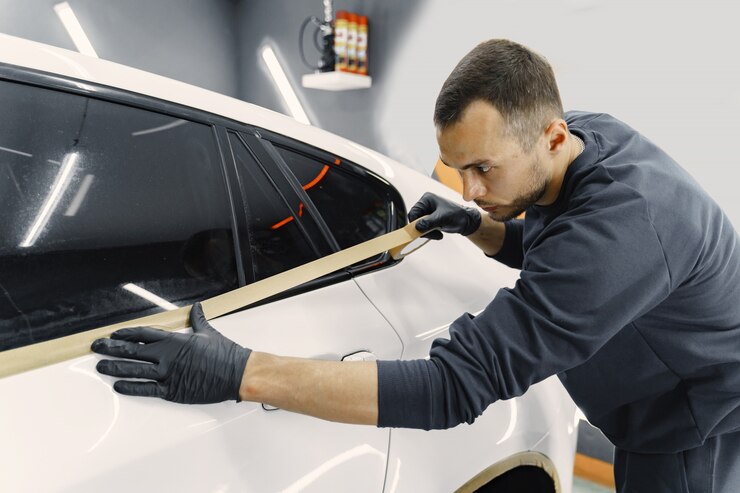Window tinting is a popular way to improve the appearance and comfort of your vehicle. The process involves applying a thin film to the surface of the car’s windows, which helps to reduce heat and glare from the sun, as well as protect the interior from fading. In this blog post, we’ll go over the basics of window tinting, including the benefits, types of films available, and the steps involved in the tinting process.
Benefits of Window Tinting
One of the primary benefits of window tinting is the reduction of heat and glare from the sun. This makes the interior of your vehicle more comfortable, especially during hot summer days. Additionally, the film helps to protect the interior of your vehicle from fading and cracking caused by exposure to UV rays.
Another benefit of window tinting is increased privacy. By reducing the amount of visibility into the interior of your vehicle, it becomes more difficult for others to see what’s inside. This can be particularly useful for people who carry valuable items in their vehicle.
Finally, window tinting can also improve the overall appearance of your vehicle. By reducing the amount of light entering the interior, it can give the car a sleek and modern look.
Types of Window Tint Films
There are many different types of window tint films available, each with its own set of benefits. Here are a few of the most popular types:
- Dyed film: This is the most basic type of film, and it works by absorbing the sun’s energy. Dyed film is typically the least expensive option, but it can also fade over time.
- Metalized film: This type of film uses metal particles to reflect the sun’s energy, making it a good choice for reducing heat and glare. Metalized film is more durable than dyed film and is less likely to fade over time.
- Carbon film: This type of film is made from a carbon-based material that blocks UV rays and reduces heat. Carbon film is often used in high-end vehicles and is known for its durability and resistance to fading.
- Hybrid film: As the name suggests, this type of film is a combination of different materials, such as metal and carbon. This makes it a good choice for people who want the benefits of both types of film.
Steps in the Tinting Process
The window tinting process typically involves the following steps:
- Cleaning: The first step in the process is to clean the windows thoroughly. This helps to ensure that the tint film will adhere properly and eliminates any potential contaminants that could interfere with the film’s performance.
- Measuring: The next step is to measure the windows to determine the size and shape of the tint film that will be needed. This helps to ensure a precise fit.
- Cutting: After the windows have been measured, the tint film is cut to size. This is typically done using a computer-controlled cutting machine, which ensures a precise and consistent cut.
- Applying: The tint film is then applied to the surface of the window. This is typically done using a solution that helps to hold the film in place and eliminates any bubbles or wrinkles.
- Trimming: Once the film has been applied, it is trimmed to fit the shape of the window. This helps to ensure a clean and professional appearance.
- Curing: Finally, the tint film is left to cure for a period of time. This allows the solution to dry and the film to adhere properly to the window.
Conclusion
Window tinting is a popular and effective way to improve the appearance, comfort, and privacy of your vehicle.

